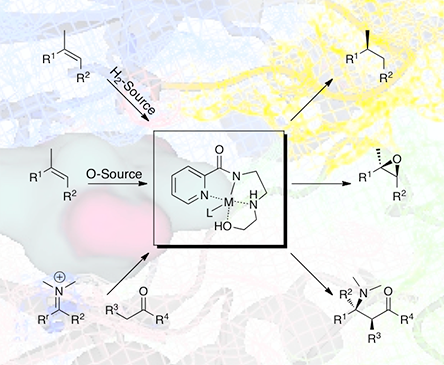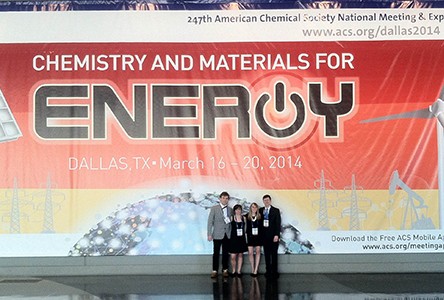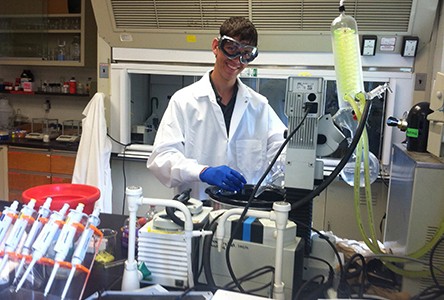https://www.smcm.edu/news/2015/10/new-research-puts-us-closer-to-diy-spray-on-solar-cell-technology/
Students excel through the Research Experiences for Undergraduates Program
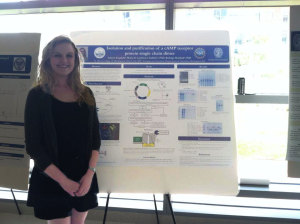
Each year St. Mary’s offers to sophomores and juniors a six week research experience in mathematics. The Research Experiences for Undergraduates (REU) Program is a paid summer internship that allows students to perform more focused research in their areas of interest.
This year chemistry student David Darby ’15 investigated protein-protein interactions at the University of Utah. He aimed to identify and create drugs to address new pharmaceutical targets. Ashton Engdahl ’15 worked at Georgetown University to express and purify a protein which can be used to learn more about the fundamental ways in which proteins react and communicate.
Prof. Craig Streu Nets $55,000 Research Grant
Many pharmaceuticals, biomolecules, and even insecticides posses a special property that chemists refer to as chirality. In general, chirality arises from the spatial arrangement of atoms in otherwise identical molecules. Hands, for example, are excellent examples of chirality. While each hand contains five digits that resemble those on the opposite hand, the left and right hands are not identical in three-dimensional space; in fact, they are mirror images. The significance of this difference is easily illustrated by attempting to place a glove on the wrong hand.
Two chiral molecules, while identical in every way except three-dimensional organization, can have very different properties. As a result, chemists have expended tremendous effort developing methods to control chirality. One particularly promising approach for controlling chirality is the use of catalysts that pass their chirality on to their products. Professor Streu has developed an exciting set of compounds that his research group is testing for just this purpose. Based upon their initial findings, his group was recently awarded a $55,000 Petroleum Research Fund grant from the American Chemical Society to support summer undergraduate researchers for the next two years, as well as chemicals and supplies.
Fruits of their Labor
The hard work of many St. Mary’s College Chemistry and Biochemistry majors paid off over the last year as they presented their research at national research conferences. Several of these students even received special recognition or awards for their work!
Four students presented their work at the 247th Chemical Society in Dallas, Texas, one presented at Experimental Biology 2014 in San Diego, California, one more presented at the Biennial Conference on Chemical Education in Grand Rapids, Michigan, and yet another presented at the New England Science Symposium in Boston, Massachusetts. Through their travels, St. Mary’s students are making a name for themselves nationwide.
This travel was made possible by generous alumni support, a grant from the John J. Leidy Foundation, an ACS Travel award, and the Department of Chemistry and Biochemistry.
New Chemistry Inside Cells
As biologists ask ever more complex questions about how cells function, new experimental methods must be developed to answer these questions. Chemists are playing an essential role in the development of these new tools.
One St. Mary’s College student in particular, Wyatt Paulishak (’16), has accepted that challenge. Specifically, Wyatt is looking to tap the potential of transition metals to activate bioactive molecules in a time and location specific manner. With the help of his research mentors, professors Mertz and Streu, Wyatt hopes that this technology will one day allow researchers to run much more precise experiments inside cells, or even be used to reduce the side effects of chemotherapy.
In support of his work, Wyatt was awarded one of just 12 Undergraduate Research Awards nationwide funded by the American Society for Biochemistry and MolecularBiology.
